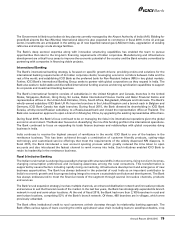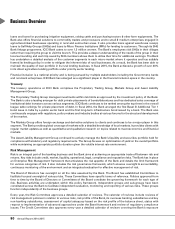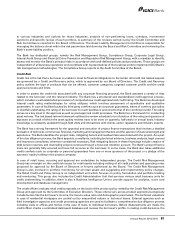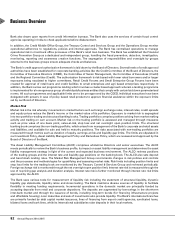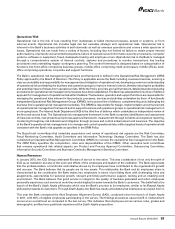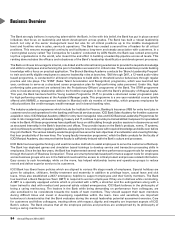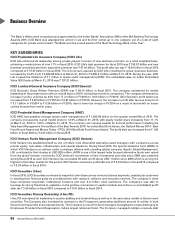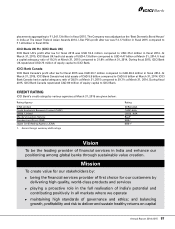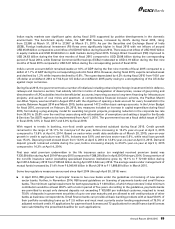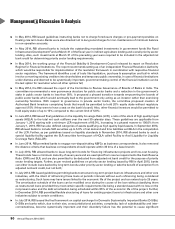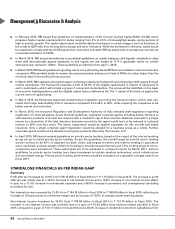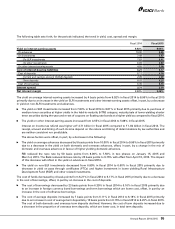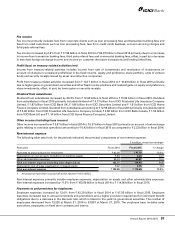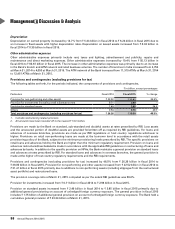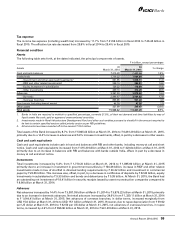ICICI Bank 2015 Annual Report Download - page 91
Download and view the complete annual report
Please find page 91 of the 2015 ICICI Bank annual report below. You can navigate through the pages in the report by either clicking on the pages listed below, or by using the keyword search tool below to find specific information within the annual report.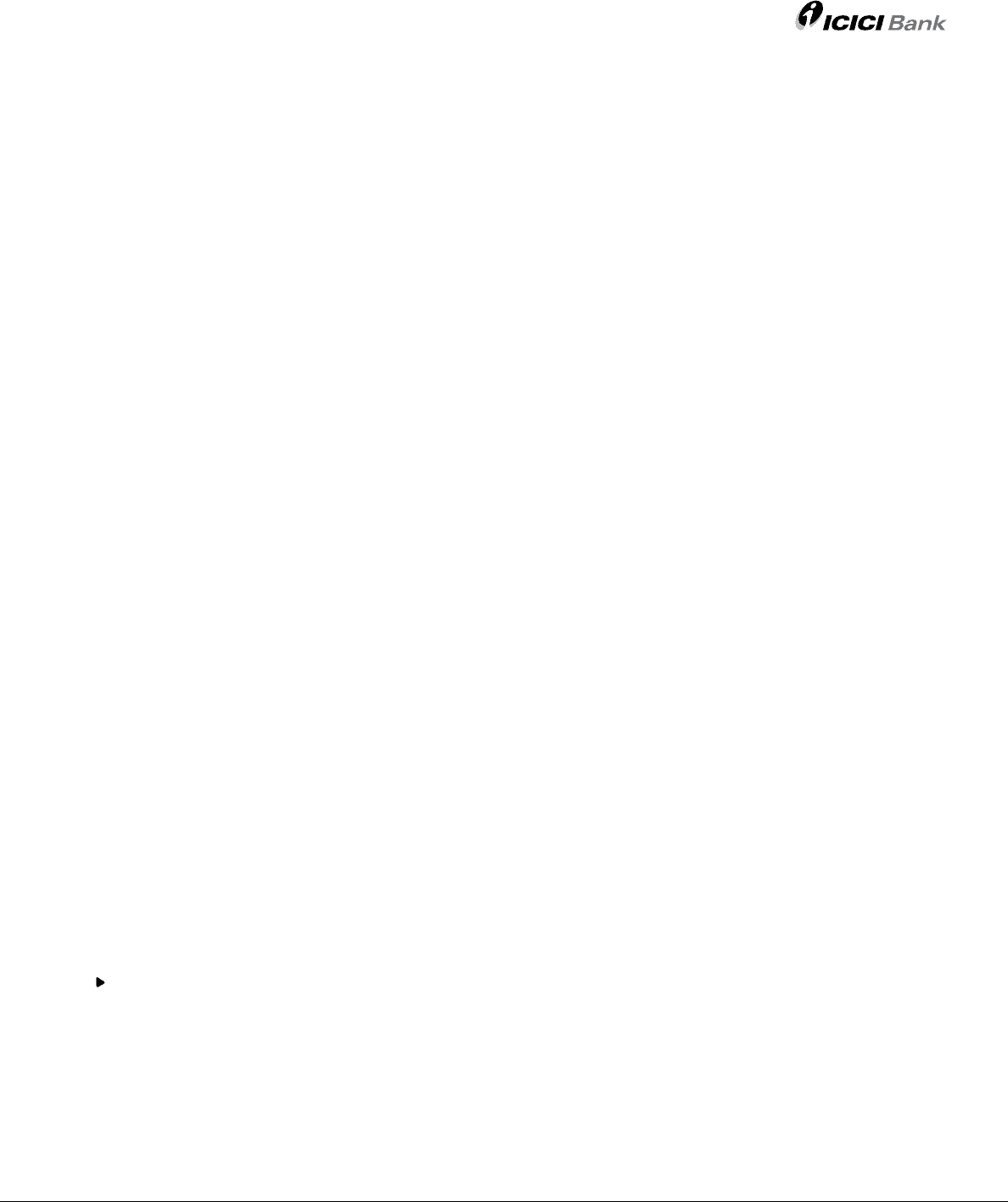
89Annual Report 2014-2015
Indian equity markets saw significant gains during fiscal 2015 supported by positive developments in the domestic
environment. The benchmark equity index, the S&P BSE Sensex, increased by 24.9% during fiscal 2015, rising
from 22,386 at March 31, 2014 to 27,957 at March 31, 2015. As per the Securities and Exchange Board of India
(SEBI), Foreign Institutional Investment (FII) flows were significantly higher in fiscal 2015 with net inflows of around
USD 45.06 billion compared to a net inflow of USD 9.07 billion during fiscal 2014. There was a net inflow of USD 18.07 billion
in equity markets and USD 26.99 billion in debt markets during fiscal 2015. Foreign Direct Investment (FDI) improved to
USD 24.63 billion during the first nine months of fiscal 2015 compared to USD 20.98 billion during the corresponding
period of fiscal 2014, while External Commercial Borrowings (ECBs) moderated to USD 4.19 billion during the first nine
months of fiscal 2015 compared to USD 5.81 billion during the corresponding period of fiscal 2014.
India’s current account deficit remained stable at 1.6% of GDP during the first nine months of fiscal 2015 compared to a
deficit of 1.7% of GDP during the corresponding period in fiscal 2014. However, during fiscal 2015, exports remained weak
and declined by 1.2% while imports declined by 0.6%. The rupee depreciated by 4.2% during fiscal 2015 from ` 60.1 per
US dollar at end-March 2014 to ` 62.6 per US dollar at end-March 2015 partly owing to a strengthening of the US dollar
against major currencies.
During fiscal 2015, the government took a number of initiatives including enhancing the foreign investment limit in defence,
railways and insurance sectors; fuel subsidy reforms in terms of deregulation of diesel prices, review of gas pricing and
direct transfer of LPG subsidies into the beneficiaries’ accounts; improving access to long-term financing for infrastructure
projects; and auction of coal mines and spectrum. A comprehensive financial inclusion scheme, the Pradhan Mantri
Jan-Dhan Yojana, was launched in August 2014 with the objective of opening a bank account for every household in the
country. Between August 2014 and March 2015, banks opened 147.2 million basic savings accounts. In the Union Budget
for fiscal 2016, announced on February 28, 2015, key measures included an increase in capital expenditure during fiscal
2016, formulating a plug-and-play model for awarding long-term projects, proposing reduction in the corporate tax rate
from 30.0% to 25.0% over the next four years along with rationalisation of exemptions and setting a target for the Goods
& Services Tax (GST) regime to be implemented from April 1, 2016. The government has set a fiscal deficit target of 3.9%
in fiscal 2016, 3.5% in fiscal 2017 and 3.0% by fiscal 2018.
With regard to trends in banking, non-food credit growth remained subdued during fiscal 2015. Credit growth
remained in the range of 10-11% for most part of the year, before increasing to 13.2% year-on-year at April 3, 2015
compared to 13.8% at April 4, 2014. Based on sector-wise credit data available as of March 20, 2015, year-on-year
growth in credit to agriculture was 15.0%, industry was 5.6% and services sector was 5.6%, while retail loan growth
was 15.4%. Deposit growth slowed down from 14.6% at April 4, 2014 to 12.8% year-on-year at April 3, 2015. Demand
deposit growth remained volatile during the year, before increasing sharply to 25.0% year-on-year at April 3, 2015
compared to 14.3% at April 4, 2014.
First year retail premium underwritten in the life insurance sector (on weighted received premium basis) was
` 335.09 billion during April 2014-February 2015 compared to ` 388.29 billion in April 2013-February 2014. Gross premium of
the non-life insurance sector (excluding specialised insurance institutions) grew by 10.1% to ` 721.90 billion during
April 2014-February 2015 from ` 655.63 billion during April 2013-February 2014. The average assets under management of
mutual funds increased by 31.4% from ` 9,045.49 billion in March 2014 to ` 11,886.90 billion in March 2015.
Some key regulatory measures announced since April 2014 (through April 30, 2015) were:
In April 2014, RBI granted ‘in-principle’ license to two new banks under the guidelines on licensing of new private
sector banks. Further, in November 2014, RBI issued guidelines on licensing of payments banks and small finance
banks. The minimum capital requirement for both types banks is ` 1.00 billion, of which the promoters’ initial minimum
contribution would be at least 40.0% with a lock-in period of five years. According to the guidelines, payments banks
are permitted to accept only demand deposits not exceeding ` 100,000 per individual customer, required to invest
75.0% of deposits in government securities of up to one year maturity and are allowed to sell credit products of other
banks as business correspondents. Small finance banks can provide all basic banking products with at least 50.0% of
their portfolio constituting loans up to ` 2.5 million and must meet a priority sector lending requirement of 75.0% of
adjusted net bank credit. 41 applications for payment bank licenses and 72 applications for small finance bank licenses
were submitted by the prescribed deadline for such applications;


